Hisense 65U6KQTUK Review
A decent Mini LED TV but one that doesn't quite stand out from the crowd


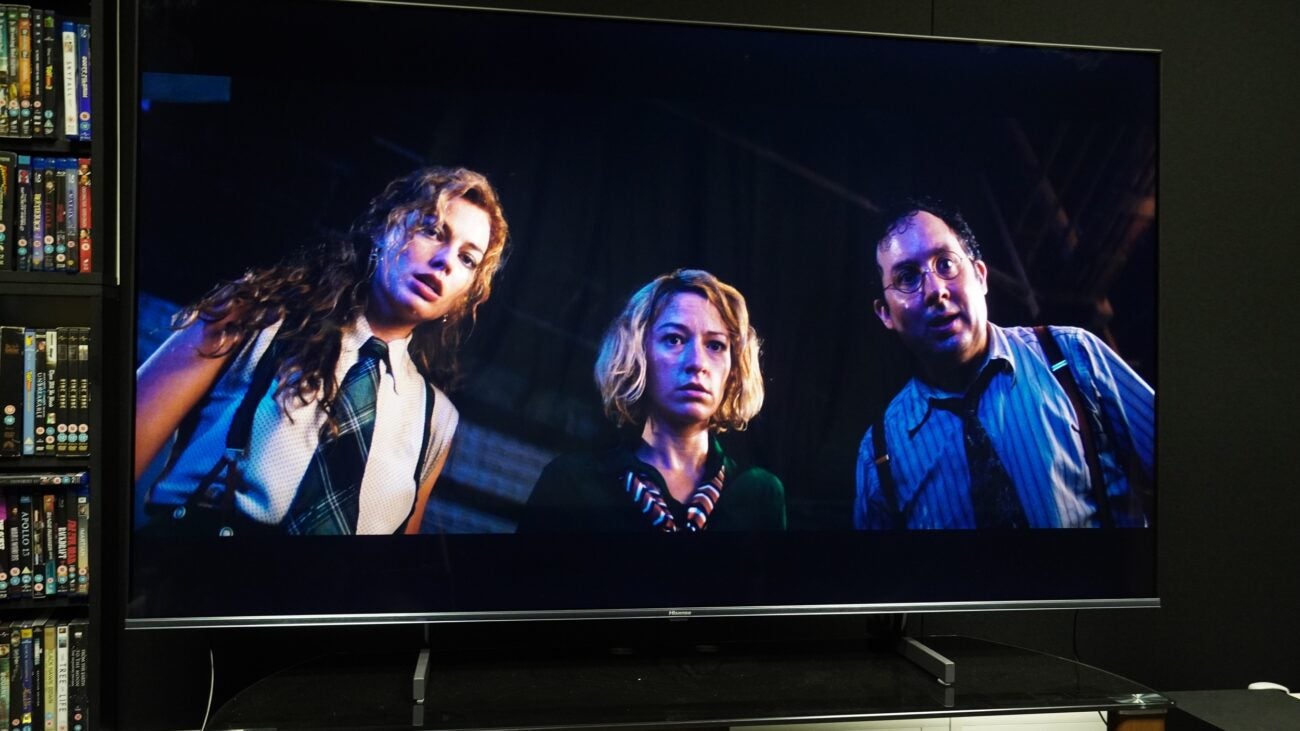

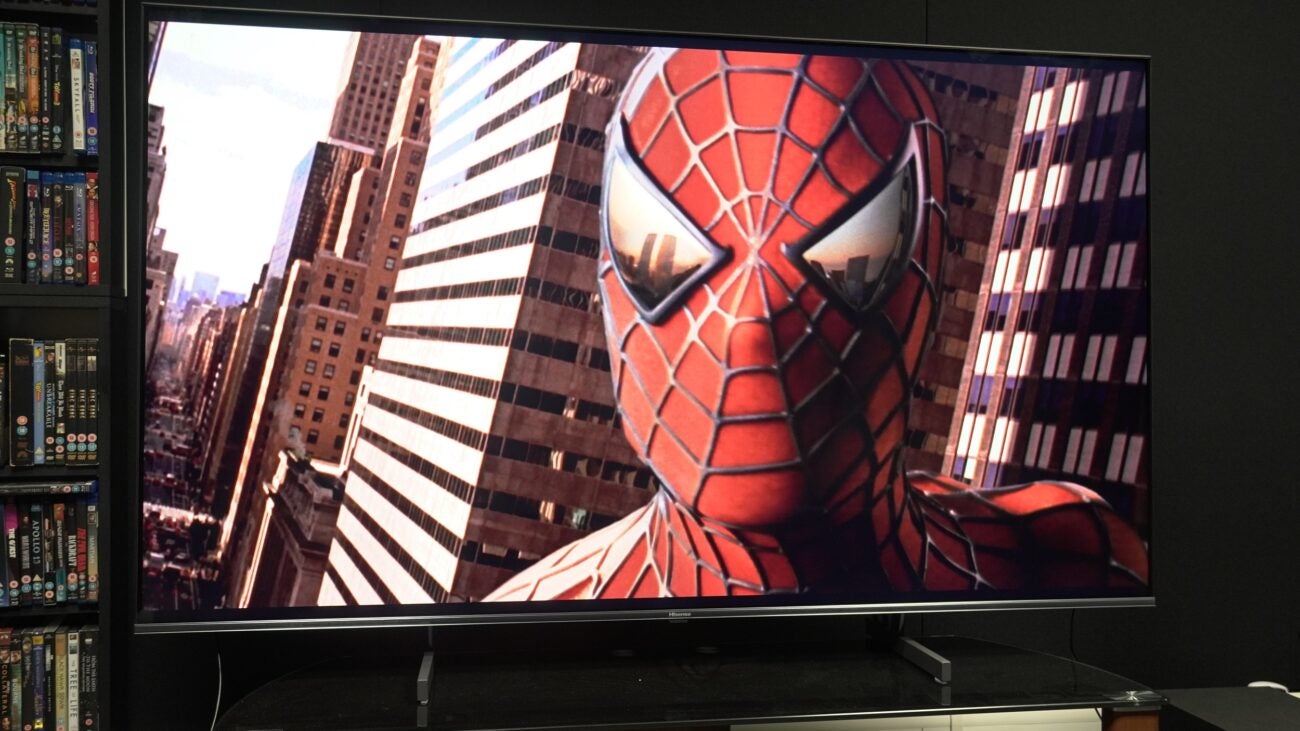
Verdict
A decent mid-range Mini LED TV from Hisense that’s capable of rich, punchy colours, but suffers from average contrast and a lack of brightness. Factor in aggressively priced alternatives and the U6K struggles to stand out from the crowd.
Pros
- Good upscaling
- Dolby Vision support
- Easy to use smart interface
- Adjustable feet design
Cons
- Not the sharpest 4K streaming performance
- Limited brightness and contrast
- Flat audio
- No HDMI 2.1 support
Key Features
- Mini LED backlight192 dimming zones for better contrast and more precise brightness
- Hi-View EngineOptimises contrast, motion, and resolution in real-time
- VIDAA UHisense’s smart interface with access to Netflix, Disney+ et al
Introduction
In the last few years, Hisense has been on the up and up, emerging as competition for the more established TV brands with their value orientated TVs.
But recently they’ve encroached into the more premium market in the UK, first with the A9H OLED, then with the U8K and U7K Mini LED TVs. The 65U6KTUK is another Mini LED in its 2023 lineup, more affordably priced but hoping to give buyers that punchy HDR image and all-round performance.
A budget winner or not quite the sum of its parts? Let’s find out.
Design
- Backlight bleeding at wider angles
- Adjustable feet position
- Elegantly unassuming looks
Smart is one word to apply to the Hisense 65U6KTUK’s design. Elegantly unassuming are two more that wouldn’t be out of place describing the U6K’s looks either.
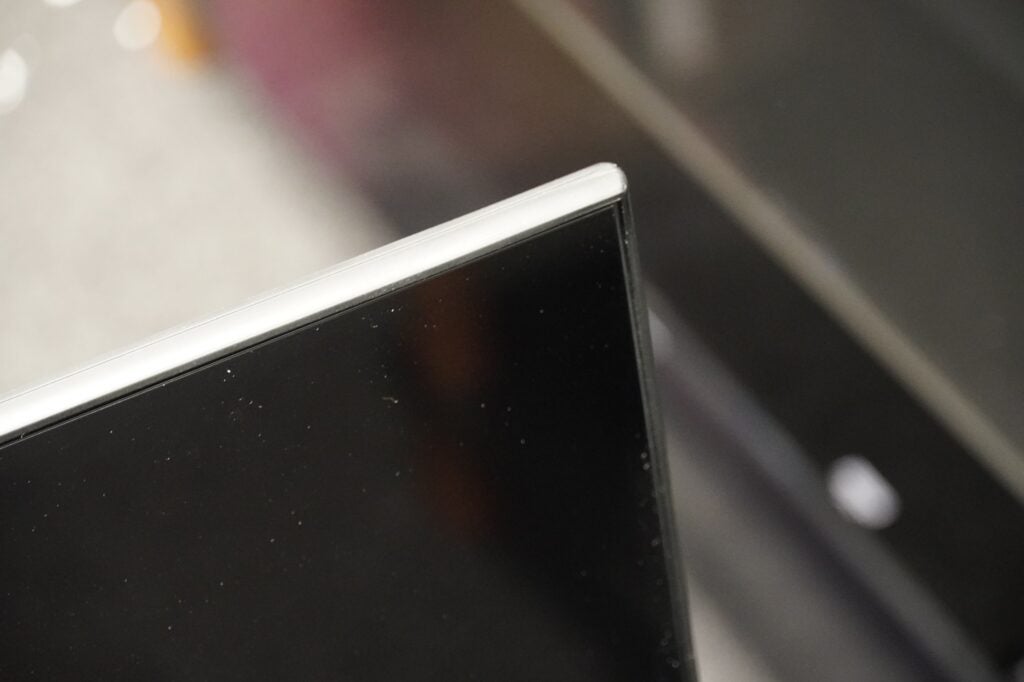
It features all the hallmarks you’d expect from a TV in 2023: thin bezels that don’t encroach on the screen, adjustable feet placement (towards the middle and out to the sides), and a slim(ish) depth of 75mm, aided by its Mini LED backlight, though, it’s not much thinner than the non-Mini LED A7G from a few years ago.
Stood on its feet there’s a slight wobble that if I called it deliberate would be generous. It might be the case of not tightening the screws to the fullest, but nevertheless, it’s not an issue unless you’re brushing past this screen in a tight spot. There’s a slot in the back of the feet to push cables through and keep the area behind the TV free from clutter.
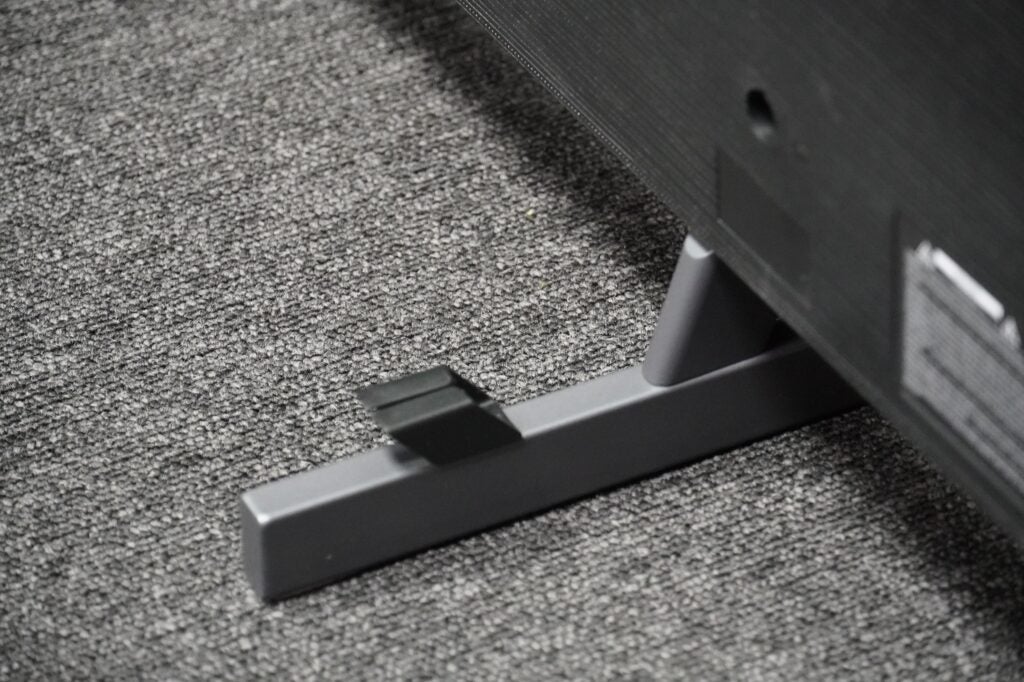
It’s only available in 55- and 65-inch sizes (the latter is the one I’m reviewing). Despite the claim of wide viewing angles, that’s not strictly true, at least not so with HDR content. From straight on the Hisense U6K tends to be fine with solid black levels and contrast.
At wider angles there’s backlight bleeding (a pale blue-ish light in areas of the screen), which is disappointing given the presence of the Mini LED backlight. Reflections are also prominent – watch any dark scene and you may see yourself in it too.
Software
- Easy to traverse
- Freeview Play integration
- Chunky remote
The VIDDA U is not a TV UI that gets much mention, but I like the simplicity of it.
Navigation from here to there is obvious, I didn’t experience any lag or slowdown and while there are plenty of paid / subscription on-demand apps, VIDDA also offers lots of free channels with curated picks in the VIDDA Free section.
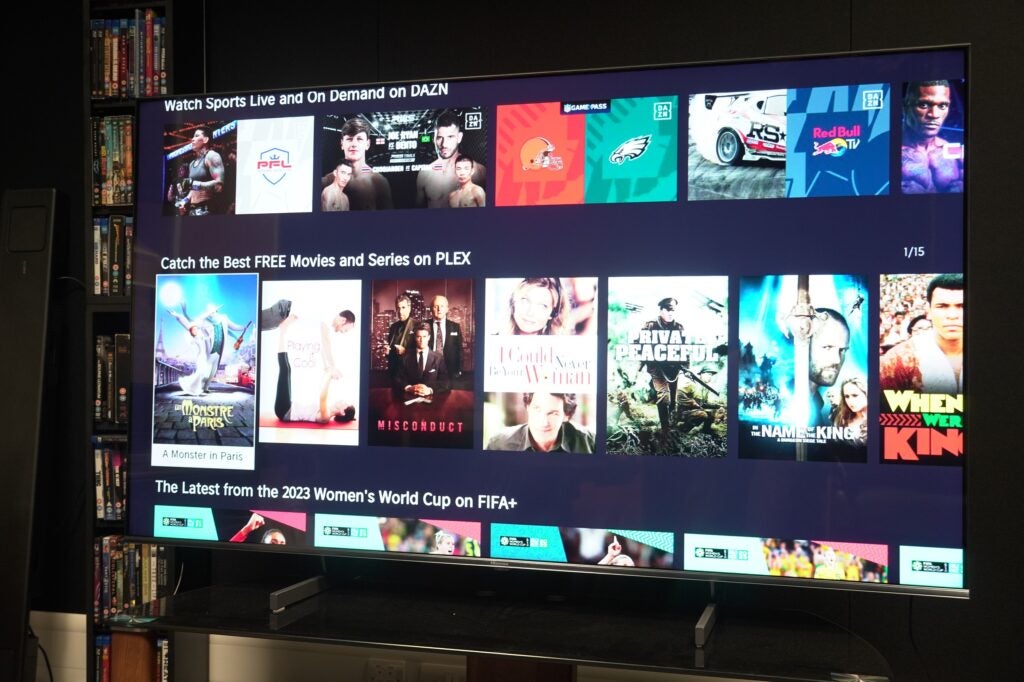
All the big video streaming apps are included, and most of the big four are presented in their optimal Dolby Vision / Atmos forms, with Disney+ lacking Atmos support (it’s only up to 5.1). UK viewers are also covered with Freeview Play, the likes of iPlayer, ITVX, Channel 4 and others are present and accounted for.
On the top row are icons that link to sources, settings, notifications, account, etc., and the menu provides explanations for what each setting does. Netflix still takes pole position in terms of placement for apps, there is a big ad front and centre in this full-screen interface, and – for the time being – directs users to the app store, which isn’t too intrusive. Content is the focus, and VIDDA U makes it easy enough to dive in and explore.
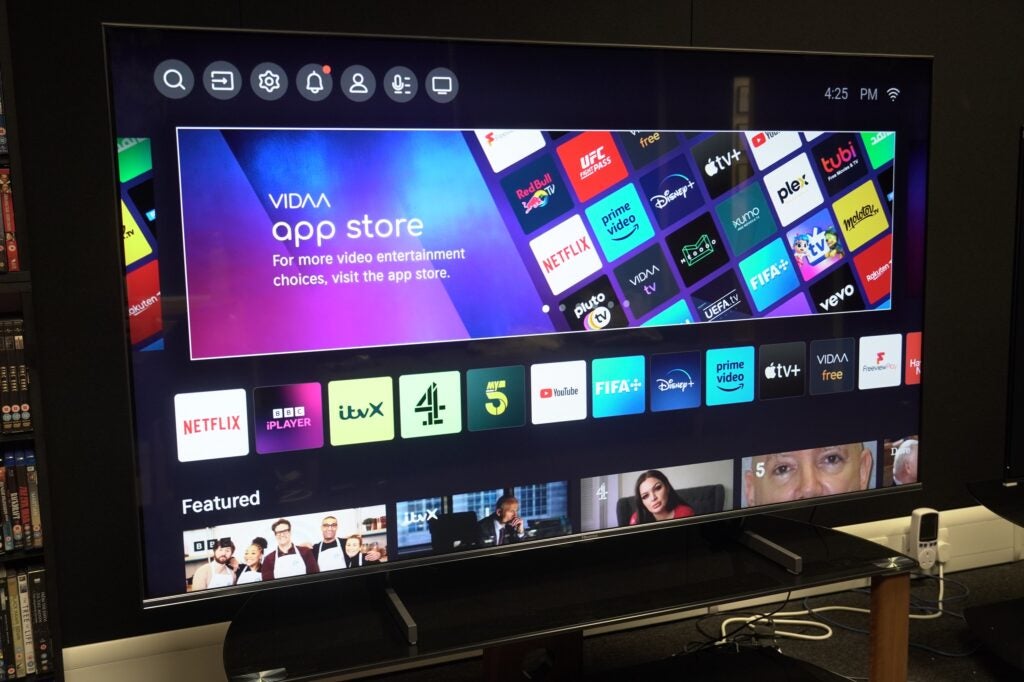
The Hisense 65U6KTUK comes with just the one remote, and it’s not one I’m enamoured with. Button presses are stiff, some presses don’t always respond, and it’s sizable remote – at least it’s not one you’d lose behind the cushions.
Buttons are well laid out, but I wish the remote wasn’t so chunky. There is the option of turning your smartphone into a remote with the Remote Now app. It can be used to set the TV up during first boot up, but for whatever reason it would not connect to the TV.
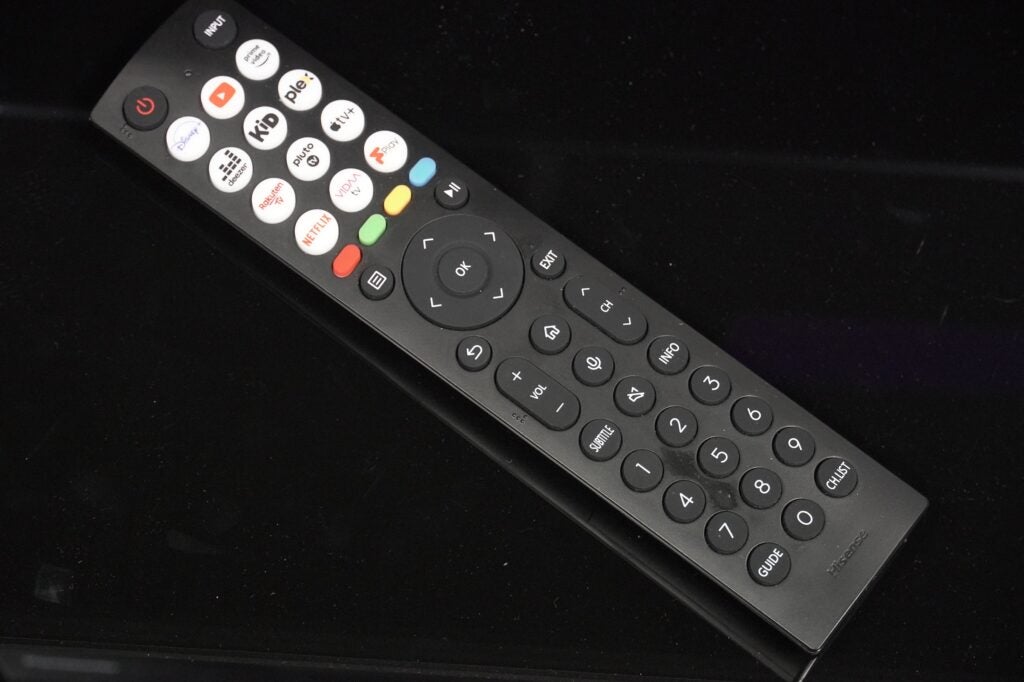
Features
- ALLM and VRR support
- Not compatibility with HDMI 2.1
- Voice assistant options
For gamers there’s auto low latency mode on all HDMI ports, so you could plug your gaming console or PC into any available port. Variable Refresh Rate (VRR) is also on every single port, bringing the benefits of a more fluid picture and lower lag with a VRR enabled game. In general, input lag is 16.5ms, which is solid but slower than what I measured on the A7G.
There’s Alexa and Google voice assistant smarts, but neither are native to the TV and require other compatible devices to be connected to the U6K to take advantage of any voice control. Hisense does provide its own option with its ‘Hey VIDDA’ shout out from the remote.
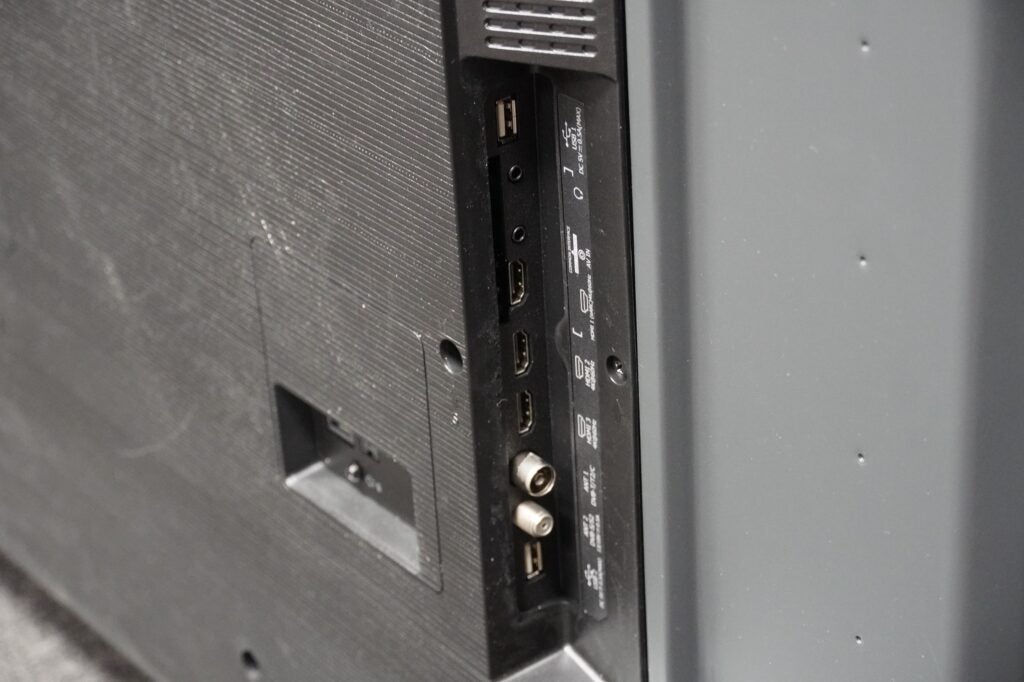
Connectivity amounts to three HDMI inputs, fewer than I would have liked and they all support the HDMI 2.0 standard, which means you won’t get 4K/120Hz (the Hisense U6K’s screen is locked to 60Hz anyway). HDMI 3 is compliant with the eARC standard, which allows for passthrough of full fat Dolby and DTS soundtracks to a compatible soundbar.
There are two USB inputs, Ethernet, Satellite / Antenna RF inputs, CI+ 1.4, digital optical out, 3.5mm audio output and an AV composite 3.5mm input. There’s Wi-Fi (DLNA, Anyview Cast) and Bluetooth 5.1 for connecting to the TV wirelessly.
Picture-wise the Hisense U6K has the Mini LED backlight that separates the screen into smaller zones – I counted 176 zones, but it looks like I missed a row as info online indicates 192. These zones allow its processor to have more precise control over contrast, brightness, and colour within those areas. The Hi-View AI engine chip dictates that performance in real-time, boosting the picture, resolution, and motion.
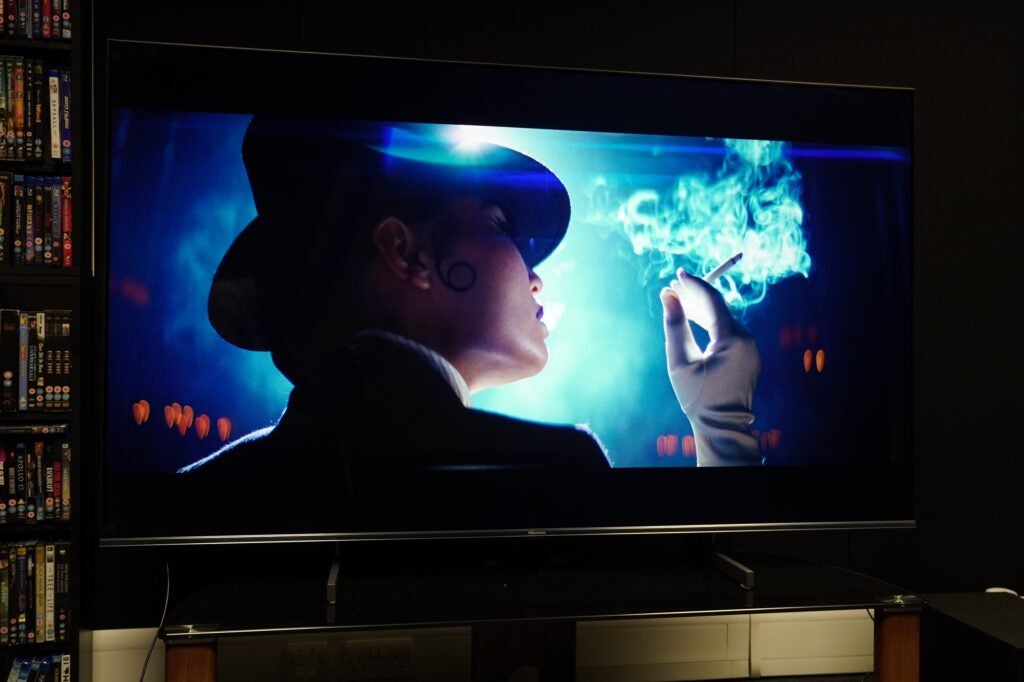
The Quantum Dot colour panel assists in producing a wide range of colours, while HDR support includes HDR10, HLG, and Dolby Vision. Though there’s mention of Filmmaker mode and HDR10+, neither of those modes were present.
For audio there is Dolby Atmos but don’t expect whizz-bang sonics with sounds appearing above and to the sides of the TV – it really amounts to improved processing and the ability to send Atmos tracks to a soundbar that can deal with them with more flair.
Picture Quality
- Average contrast
- Limited brightness
- Good upscaling performance
Though its product page indicates up to 600 nits of brightness, in real world terms, peak brightness with HDR content hits 499 nits on a full-screen pattern. On a 10% window, brightness hits 449 nits in Dynamic mode or 415 nits in Standard. Actual sustained brightness is lower than those peak figures, too.
In simpler terms, the Hisense U6K isn’t the brightest TV out of the box with HDR10 and HLG content. Small bright objects (fires, car headlights, etc) aren’t supplied with a great amount of brightness, and while from a head-on position black levels can be strong, it’s the lack of overall brightness that results in an average contrast in showing the difference between deep blacks and bright highlights.
Watching HLG HDR content on iPlayer and colours can look dull, contrast is less pronounced, and complexions look on the pale side. It looks okay, but lacks excitement.
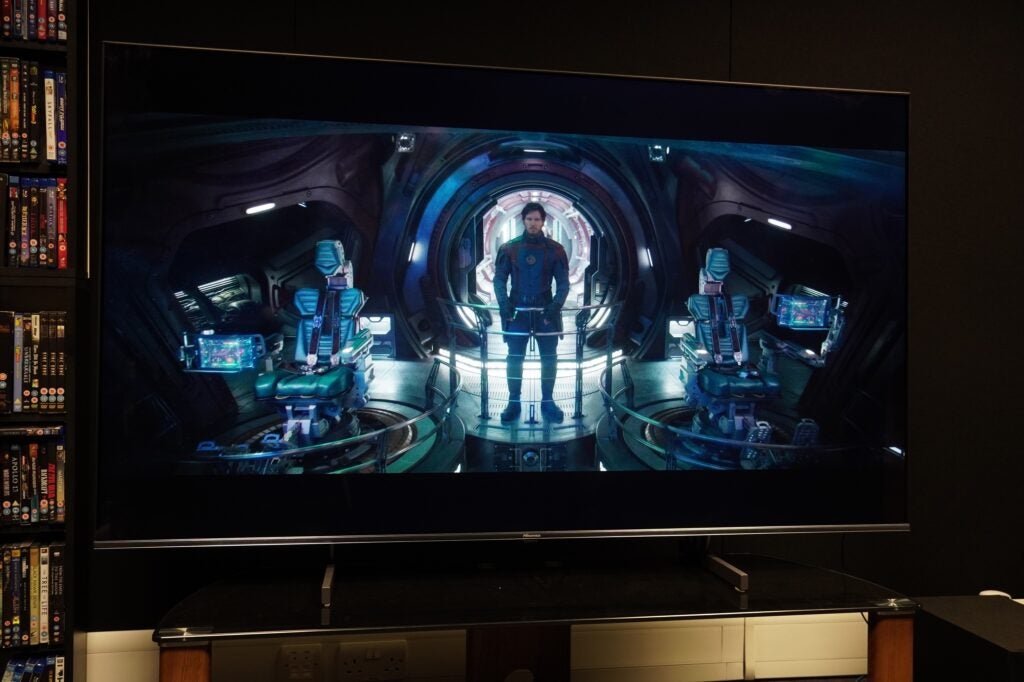
It’s not the sharpest looking image either. Despite some Dolby Vision assistance, Guardians of the Galaxy Vol.3 on Disney+ can look dark even in the TV’s Dolby Vision Bright mode. There are times when HDR colours lack punch on this set, but the lack of sharpness – at least with streaming content – doesn’t help matters.
Retrieval of detail in darker scenes is below par too. Watching the Rings of Power on Prime Video (Dolby Vision) and in dark scenes there’s black levels the Hisense U6K can’t peer into.
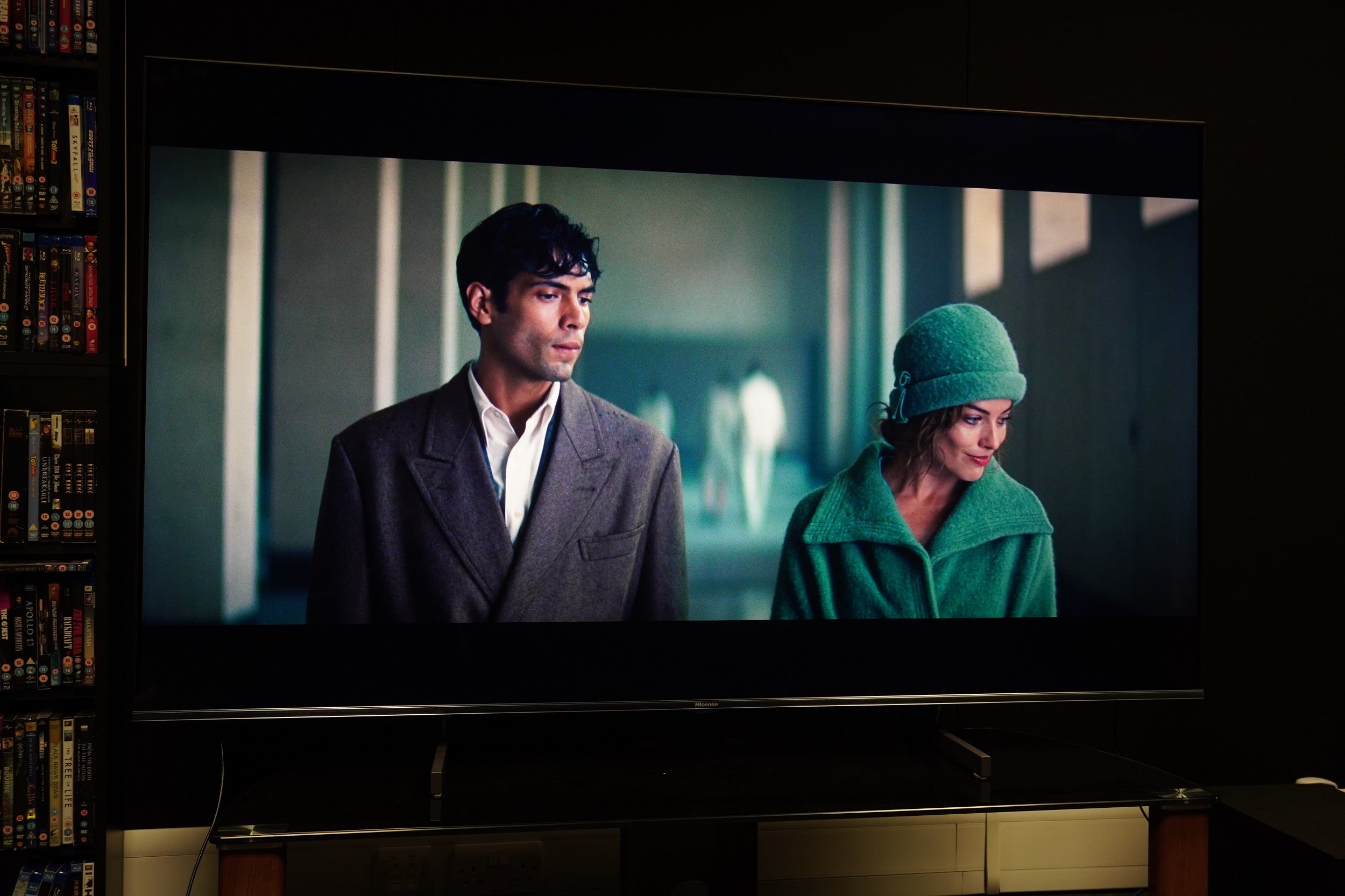
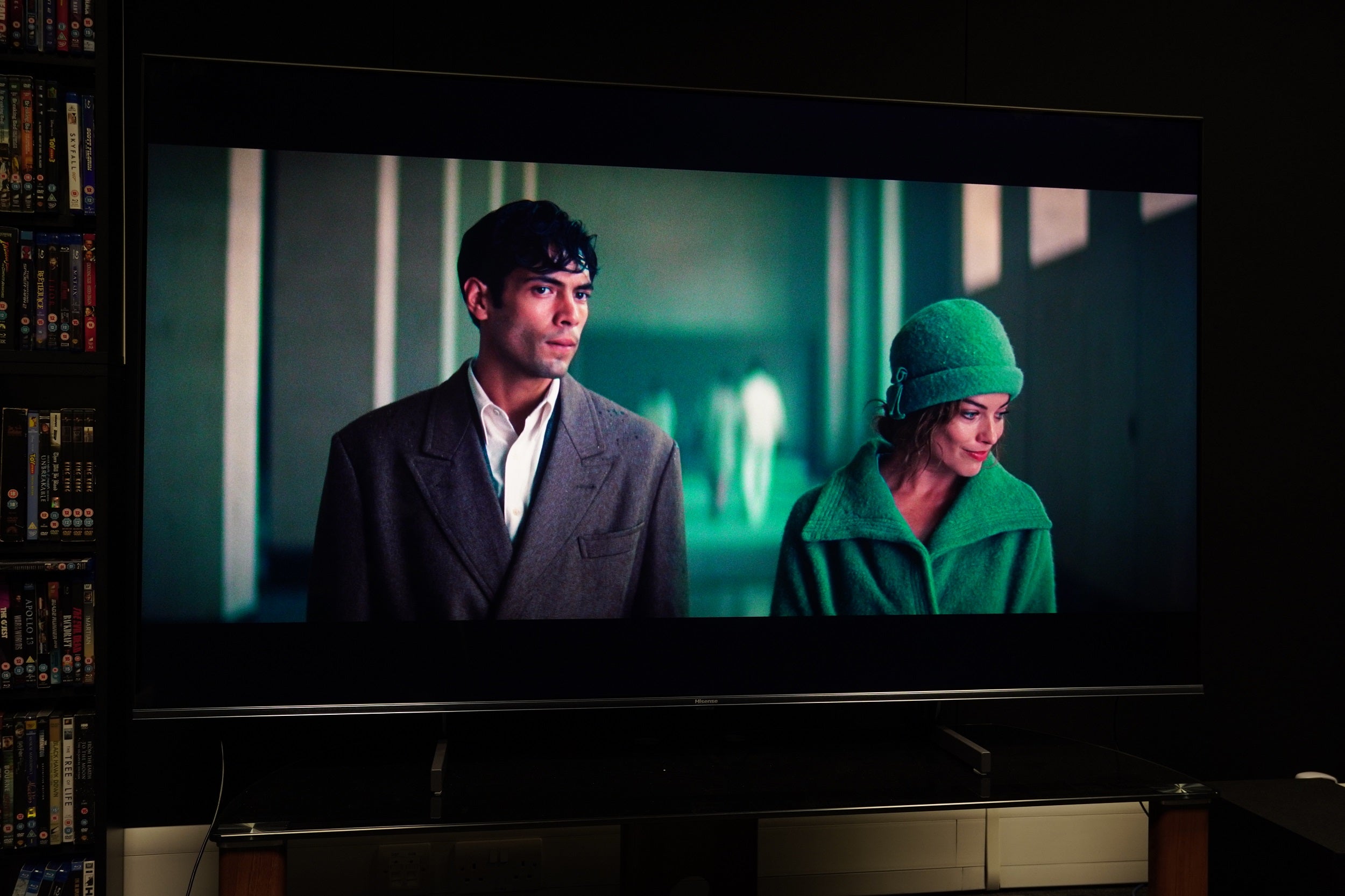
Moving to Babylon on 4K Blu-ray (HDR10) and there are instances of overly warm skin complexions, a red push that turns some characters beetroot red in the scene where the film crew are trying to record sound for the first time – there’s too much punch and saturation in this instance – while black crush is evident in the night-time sky and black suits of a lavish Hollywood party.
But when the Hisense U6K gets things right, it is capable of dazzling with its images. While Babylon in HDR10 doesn’t have the greatest balance, in Dolby Vision it looks absolutely striking. The rich reds, golden oranges, pinks, and blues come out strong, skin tones are fleshed out more naturally, blacks are richer and furnished with more detail. It brings out the lovely colours on this disc.
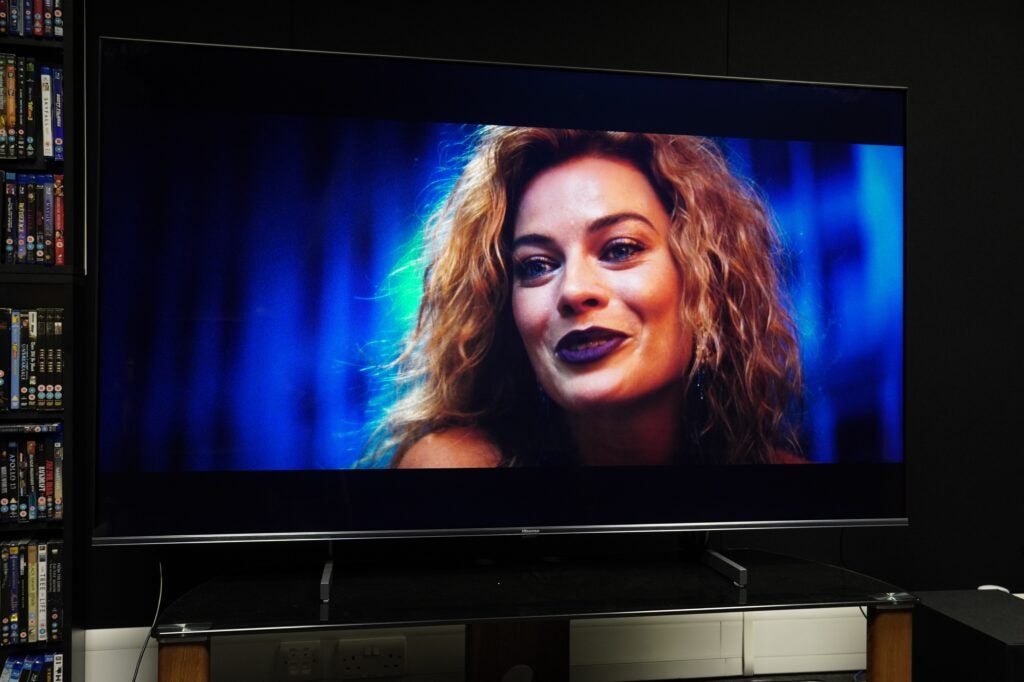
A 4K Blu-ray of Doctor Strange in the Multiverse of Madness puts in a clear, sharp 4K picture, but the HDR10 version can suffer from crushed blacks compared to the Dolby Vision version on Disney+, which isn’t as sharp but features more expressive skin tones. It’s a slight pickle the Hisense U6K finds itself in.
It’s on more confident ground with SDR and upscaling less than 4K content. Watching a DVD of Sin City and while it looks processed with a lack of fine detail (and a slight green tone to some blacks), there’s less noise and fuzziness than I expected with some decently delineated edges and lines.
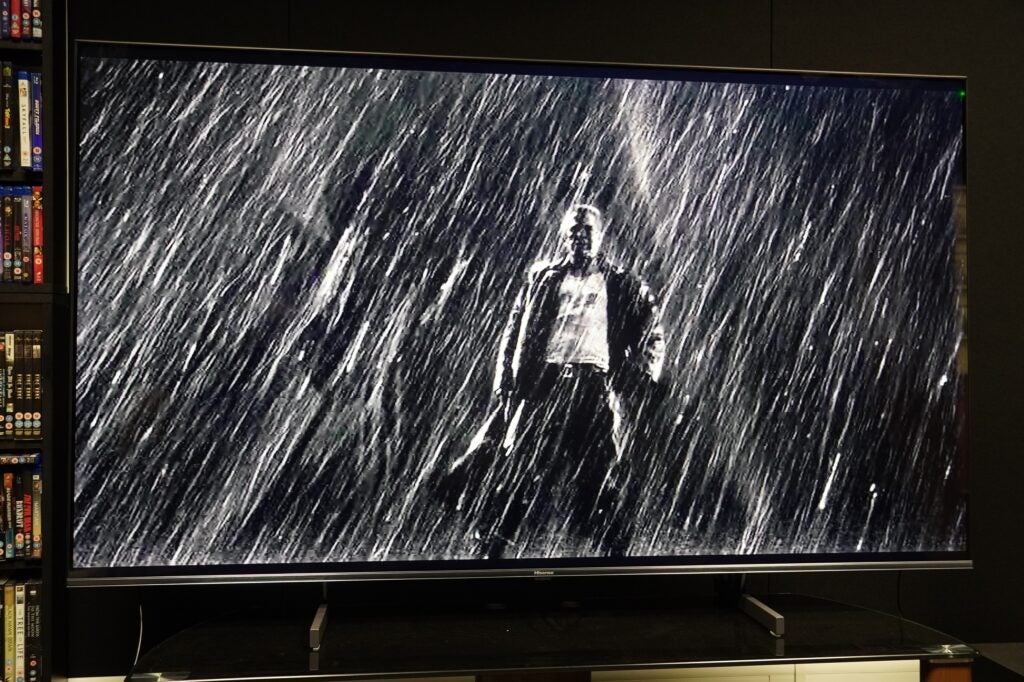
A DVD of Zodiac shows up the same qualities with slightly fuzzy edges, soft textures, and a little blurriness with movement – the Hi View processor has difficulty defining objects in the background of shots which look jagged, but there’s nothing overly egregious here with the upscaling, especially for a 65-inch TV.
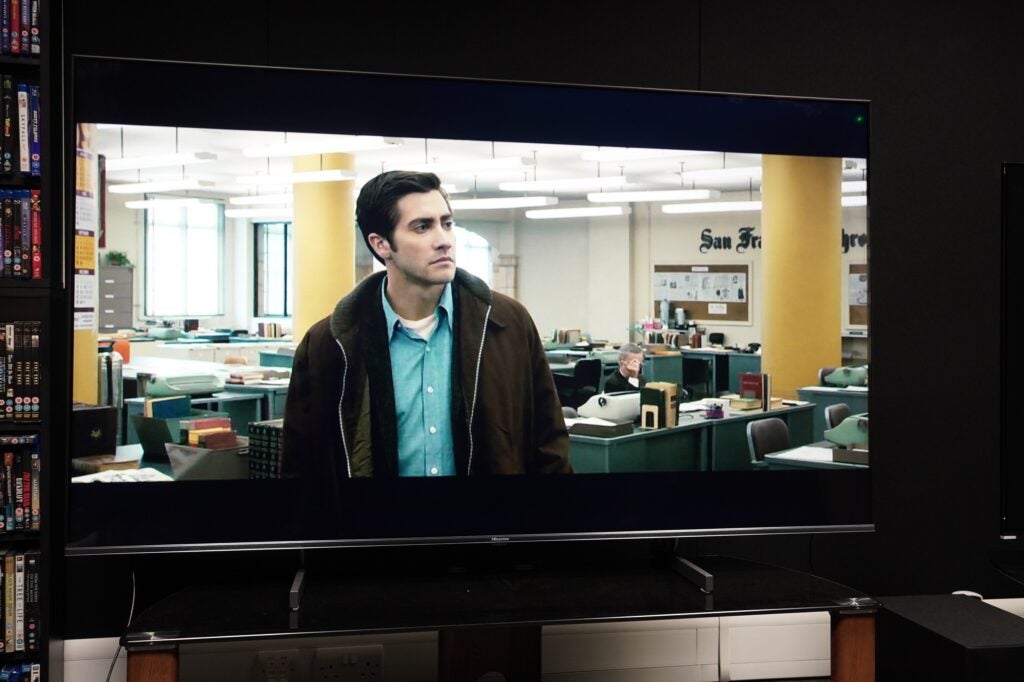
Colours look natural and accurate when viewing in Cinema Day mode but in other cooler modes such as Standard, Dynamic and Sport, blue and green tones are exacerbated to the point where the whole image looks unnatural. Stick with Cinema Day and it’s a much more accurate and balanced picture.

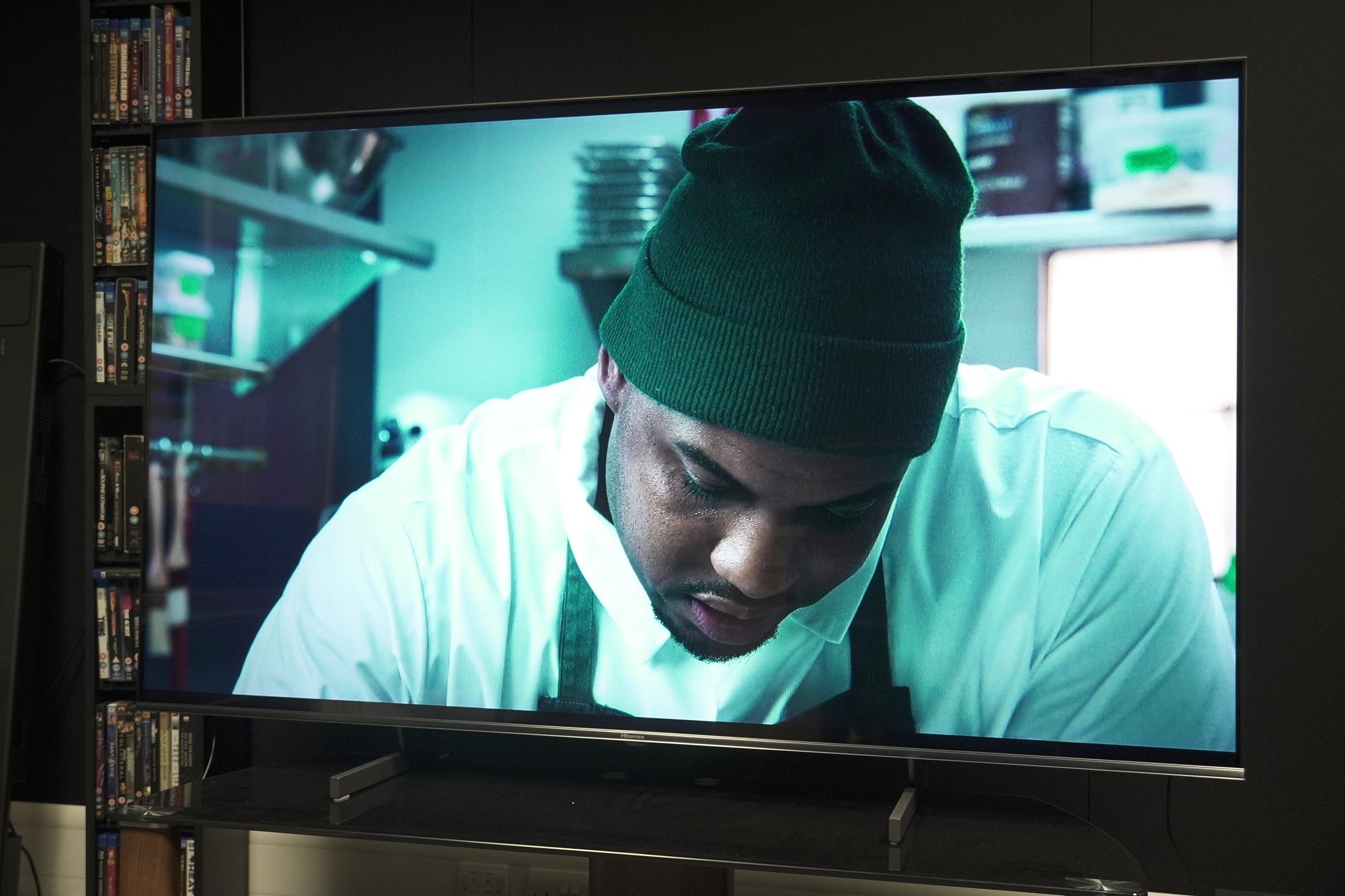
It’s a step up in clarity, sharpness, and detail with Blu-rays of Spider-Man and Kong: Skull Island. Spider-Man is a showcase of good, mostly natural-looking colours though reds can look a little bright. There’s still that aspect of it looking slightly processed even though I’ve turned off the motion smoothing, but the film’s inherent film grain isn’t treated as noise, there’s lots of clarity and detail, and black levels are strongly defined in SDR.
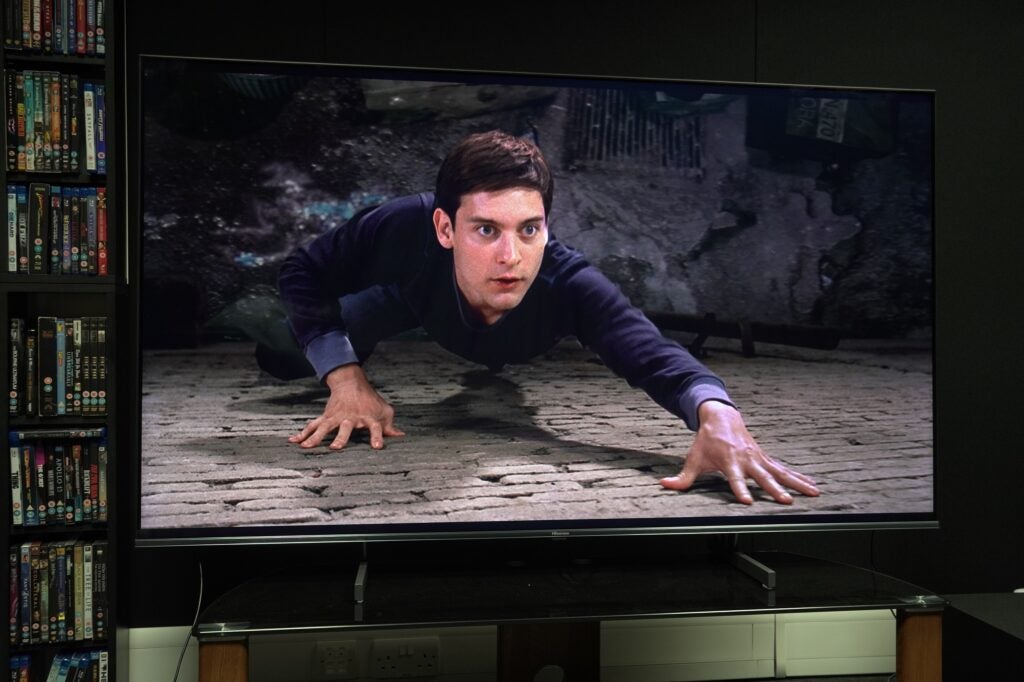
Skull Island is another winningly colourful performance with wide-ranging and varied colours; a good combination of deep, saturated colours and lighter, subtler ones for an engaging image. The Hisense U6K puts in a better balanced SDR picture than the Amazon Fire TV Omni QLED.
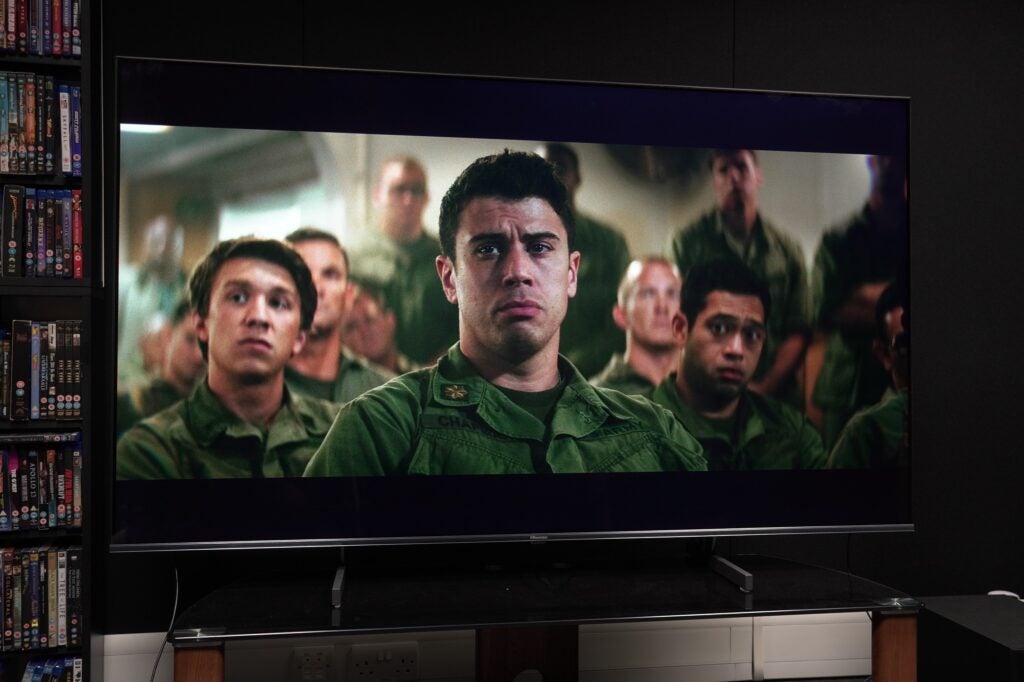
The set’s motion processing needs some tweaking – Standard can be noisy with fast camera moves, but play with the settings and a solid compromise can be found with Judder set at 3 points and Blur at 2.
Overall there’s a decent picture performance to be wrung from the U6K, but there are caveats.
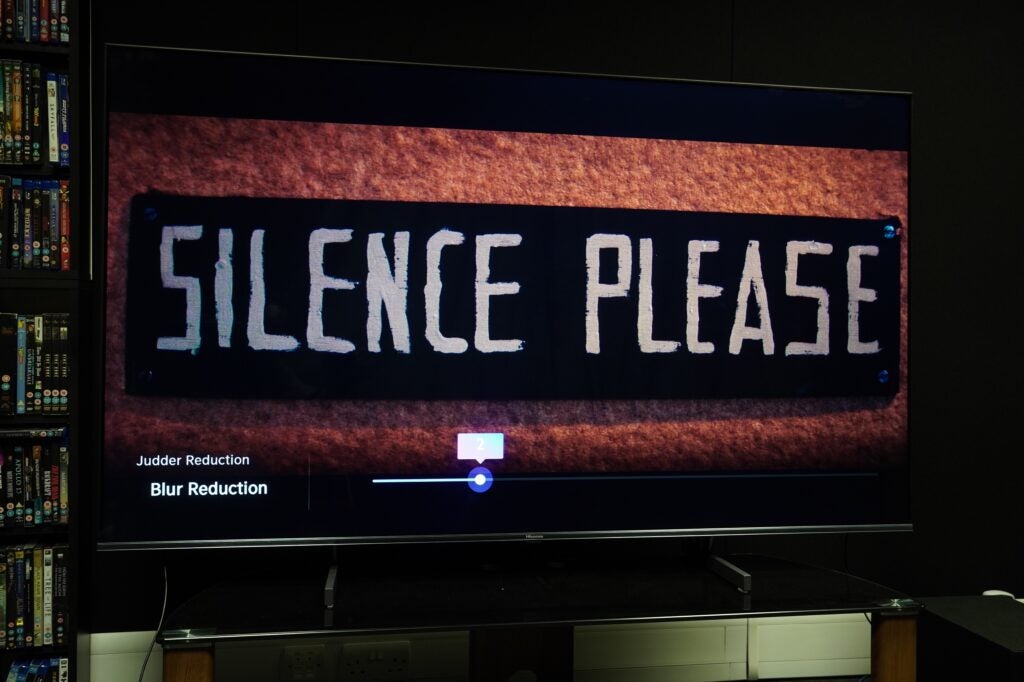
Sound Quality
- Several modes to choose from
- Flat performance
- Good vocal clarity
The Hisense U6K pumps out audio from its two-channel speaker system in a crisp tone, providing good clarity to voices. While there is bass, there’s not much of it, the overall performance lacks depth and extension, which is not unexpected from a flatscreen TV.
There are several modes to choose from, but the Theatre mode brings the most engagement – the presentation is a little bolder and energetic, wider too as well as spacious, with a decent balance between music, dialogue, and effects in a film such as Kong: Skull Island, but much like trying to run away from a 104ft gorilla, there’s no escaping it’s a flat and thin soundstage.
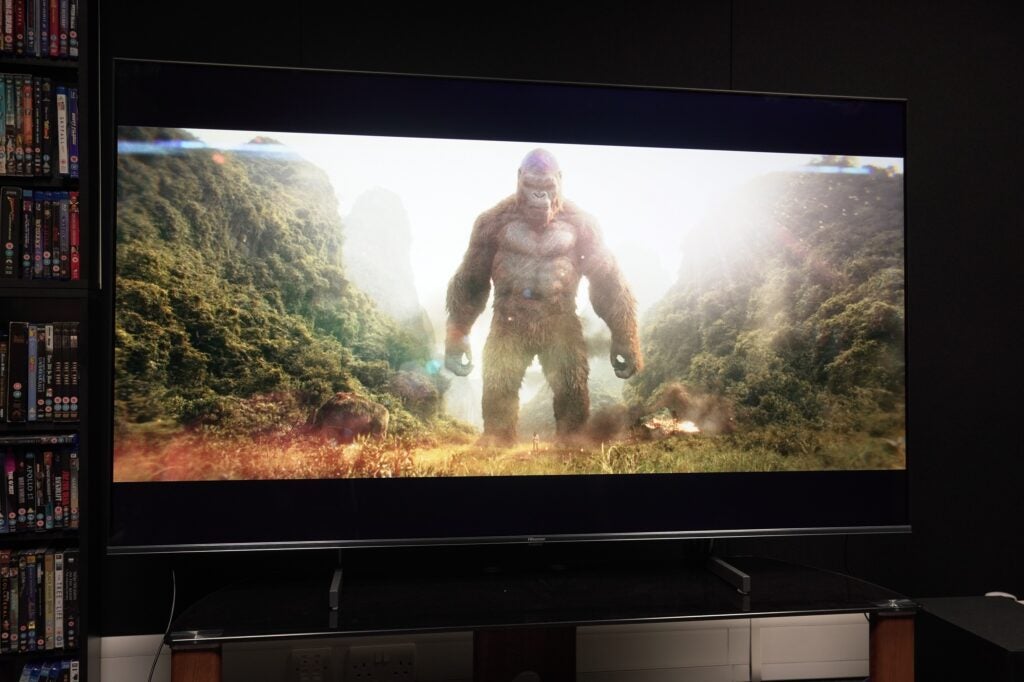
The Music preset sounds the biggest and most energetic, Speech mode induces a little sibilance with its sharp tone, with the Standard mode okay, but for the most part the Hisense U6K’s sound is unremarkable, and at volume level 50 it doesn’t feel greatly loud. It’s the type of performance where budgeting for a soundbar should be considered.
Latest deals
Should you buy it?
If you watch Dolby Vision content
The Hisense U6K is a decent Mini LED TV and performs best with Dolby Vision content.
If you want better performance and value
There’s tough competition from the TCL C845K, Amazon Fire TV Omni QLED and even Hisense’s own U7K Mini LED.
Final Thoughts
The Hisense 65U6KTUK is a competent TV, an affordable effort that’s a 7/10 in most aspects but with the right content it can dazzle.
Even though it’s armed with a Mini LED backlight, its HDR performance is limited by its lack of brightness. And though it has Dolby Vision to assist the image, with streaming content there’s a general lack of sharpness that makes for slightly dull pictures. Give the Hisense U6K a 4K Blu-ray and it can flourish with rich colours but there are caveats with its average contrast and limited black levels.
Other options include the aggressively priced TCL C845K, Amazon Fire TV Omni QLED, and even Hisense’s own U7K model. You’re not lacking for choice and when you look at what else is available, the Hisense U6K doesn’t quite stand out from the crowd.
How we test
We test every television we review thoroughly over an extended period of time. We use industry standard tests to compare features properly. We’ll always tell you what we find. We never, ever, accept money to review a product.
Find out more about how we test in our ethics policy.
Tested with real world use
Benchmarked with tests
Tested across a month
FAQs
Despite being listed as supporting HDR10+, the UK version of the Hisense U6K doesn’t appear to support it. Our suspicion is that the US version does include it, as well as Filmmaker mode, which is also absent from the UK version.








